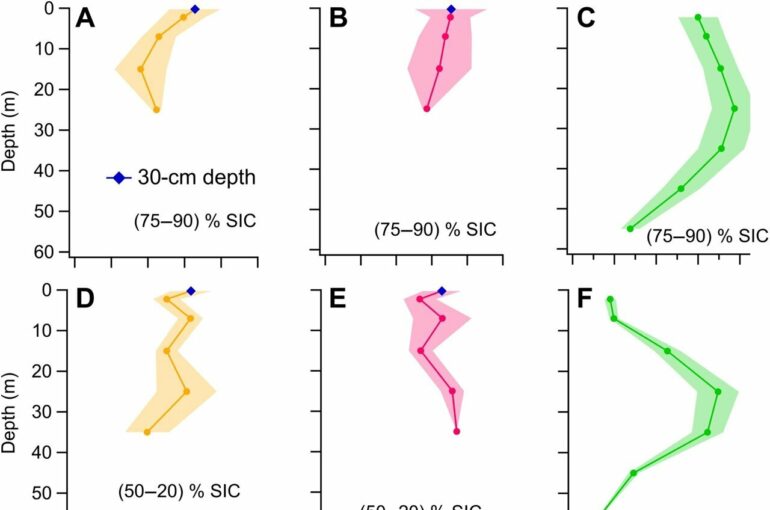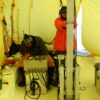In addition to oxygen, nitrogen or carbon dioxide, the air we breathe contains small amounts of organic gases, such as benzene and toluene. These oxidize into small particles or aerosols that contribute to the condensation of water in the droplets that form clouds. Now, a study by the Institut de Cièncias del Mar (ICM-CSIC), the Instituto de Química Física Rocasolano (IQFR-CSIC) and the Plymouth Marine Laboratory (PML) stresses the importance of clouds, which filter solar radiation, for understanding past and future climate changes.
“If we don’t get the clouds right, we won’t get the climate right,” says Charel Wohl, ICM-CSIC researcher and lead author of the study. “We are just beginning to unveil the multiple ingredients that form cloud seeds,” he adds.
The work, published in the journal Science Advances, describes the first measurements of benzene and toluene in polar oceans and indicates that these compounds have a biological origin. Until now, their presence in polar marine air was thought to be a proof of the extent of human pollution from coal and oil combustion or solvent use, among others.
A biological origin
The only way to know how the atmospheric composition was regulated before the profound changes generated by human activity in the industrial era is to study those regions where the air is still clean, such as the polar areas.
To carry out the study, the team measured the concentrations of benzene and toluene in surface water and air during the course of two oceanographic campaigns: one in the Arctic and the other in the Southern Ocean. The distribution of these gases, their relationship to the amount of phytoplankton, and the fact that the ocean was constantly emitting them into the atmosphere rather than capturing them from it, led the researchers to conclude that they were of biological origin.
Then, by incorporating the data into a global atmospheric chemistry and climate model, the scientific team realized that benzene and toluene emitted by the ocean contributed significantly to aerosol production. This was especially true in the extremely clean and unpolluted atmosphere of the Southern Ocean, where these two gases increased the amount of organic aerosols by 8% and up to 80% in transient situations.
According to the authors of the paper, the natural effect of marine benzene and toluene on atmospheric chemistry was most likely a widespread and global phenomenon before the Industrial Revolution. However, it would now be masked by the widespread impact of pollution.
In any case “climate models will have to consider benzene and toluene emissions from the oceans if they want to get the clouds right in climate projections for both the past and the future,” says IQFR-CSIC researcher and head of the atmospheric modeling part of the study Alfonso Saiz-López.
For his part, ICM-CSIC researcher and co-author of the study Rafel Simó, adds that “this is another example of how millions of years of evolution have shaped the interactions between the ocean and the atmosphere, so that ocean life has not only adapted to the climate, but has contributed to regulate it.”
In the future, the team will further study the impact of marine microscopic life on the atmosphere. In fact, in just two weeks they will travel to Antarctic waters again to confirm the finding and make more measurements.
More information:
Charel Wohl et al, Marine biogenic emissions of benzene and toluene and their contribution to secondary organic aerosols over the polar oceans, Science Advances (2023). DOI: 10.1126/sciadv.add9031
Provided by
Institut de Ciències del Mar (ICM-CSIC)
Citation:
New study highlights the impact of two new marine gases on climate models’ accuracy (2023, January 31)



